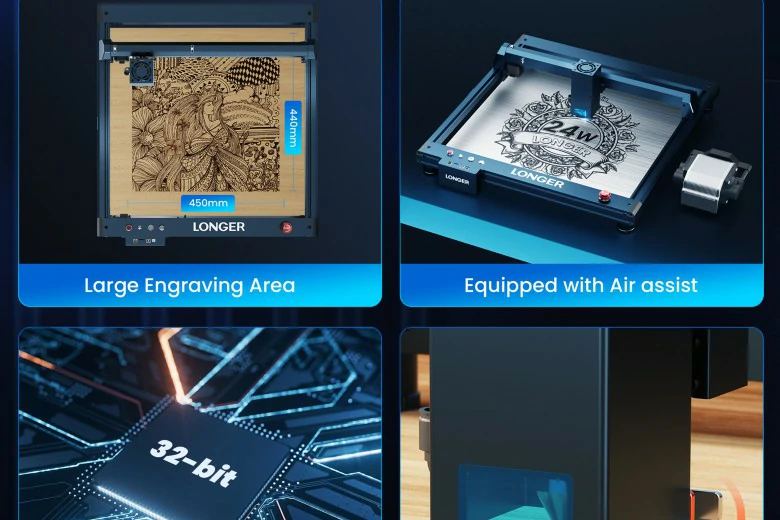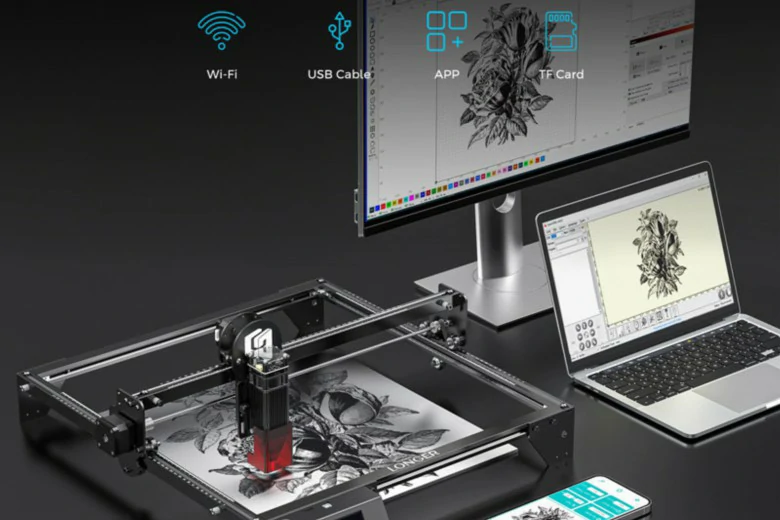The difference between laser marking machine laser engraving machine
Laser marking and laser engraving machines are two important tools used in various industries for creating permanent marks or designs on different types of materials. While both machines use similar technology involving a laser beam to alter the surface of the material, there are distinct differences between the two processes in terms of application, depth of marking, and the type of marks produced. Understanding laser engrave machine these differences is crucial for businesses and manufacturers when choosing the appropriate technology for their specific needs.
Laser Marking Machine:
A laser marking machine utilizes a focused beam of light to mark the surface of a material by altering its properties or color. This process is often used to create high-contrast marks, such as codes, serial numbers, logos, or decorative patterns, on a wide range of materials including metals, plastics, ceramics, and organic materials. Laser marking can be achieved through various methods, including surface annealing, surface etching, carbon migration, and coloration, depending on the material and the desired mark.
The advantages of using a laser marking machine include high precision, speed, and permanence of the marks. The marks produced by the laser are generally resistant to wear, corrosion, and fading, making them suitable for applications where durability is essential. Additionally, laser marking is a non-contact process, which means there is no direct interaction between the machine and the material, resulting in minimal mechanical stress on the workpiece.

Laser Engraving Machine:
In contrast, a laser engraving machine removes material from the surface of an object to create a deeper cavity or indentation, resulting in a visible design or pattern. This process is commonly used to create intricate designs, texts, images, or 3D reliefs on various materials such as wood, acrylic, glass, leather, and certain metals. The depth and quality of the engravings produced by the laser depend on the power and speed settings, as well as the type of material being engraved.
One of the key advantages of laser engraving is its ability to achieve precise and detailed work with a high level of accuracy. This makes it a popular choice for customization, personalization, and artistic applications, where intricate designs or fine details are required. Additionally, laser engraving can be used to create tactile effects by adjusting the depth of the engravings, adding another dimension to the finished product.
Differences in Application:
The primary difference between laser marking and laser engraving lies in their respective applications. Laser marking is typically used for creating surface marks that are easily visible and legible, often for identification, branding, or traceability purposes. On the other hand, laser engraving is more suitable for creating deep, permanent, and visually appealing designs that may also serve functional or decorative purposes. Understanding the specific requirements of the intended application is essential in determining whether laser marking or laser engraving is the most appropriate solution.
Depth of Marking:
Another significant difference between the two processes is the depth of the marks they produce. Laser marking creates superficial marks on the surface of the material, altering its color or properties without significantly affecting the material’s depth. In contrast, laser engraving removes material to create deeper indentations or engravings, resulting in a more pronounced and tactile effect. This distinction is important when considering the visibility, durability, and tactile qualities of the final marks.

Type of Marks Produced:
The type of marks produced by laser marking and laser engraving also differs significantly. Laser marking typically results in high-contrast, surface-level marks that may vary in color, texture, or reflectivity depending on the material and the marking method used. On the other hand, laser engraving produces deeper, more textured marks that can range from subtle gray-scale effects to bold, multi-layered engravings, offering a wider range of visual and tactile possibilities.
Material Compatibility:
Both laser marking and laser engraving technologies are compatible with a wide range of materials, including metals, plastics, ceramics, glass, wood, and composites. However, the choice between the two processes may depend on the specific material properties and the desired outcome. For instance, laser marking is well-suited for creating marks on metal surfaces without compromising the material’s structural integrity, while laser engraving is often used for achieving detailed designs on organic materials such as wood or leather.
While laser marking and laser engraving machines share similarities in their use of laser technology, they serve distinct purposes and offer different capabilities in terms of marking and engraving materials. Understanding the differences between these processes is crucial for businesses, manufacturers, and designers seeking to implement the most suitable technology for their specific applications. Whether it is creating permanent marks for identification and traceability or producing elaborate designs for artistic or functional purposes, the choice between laser marking and laser engraving ultimately depends on the specific requirements of the project and the desired outcome.